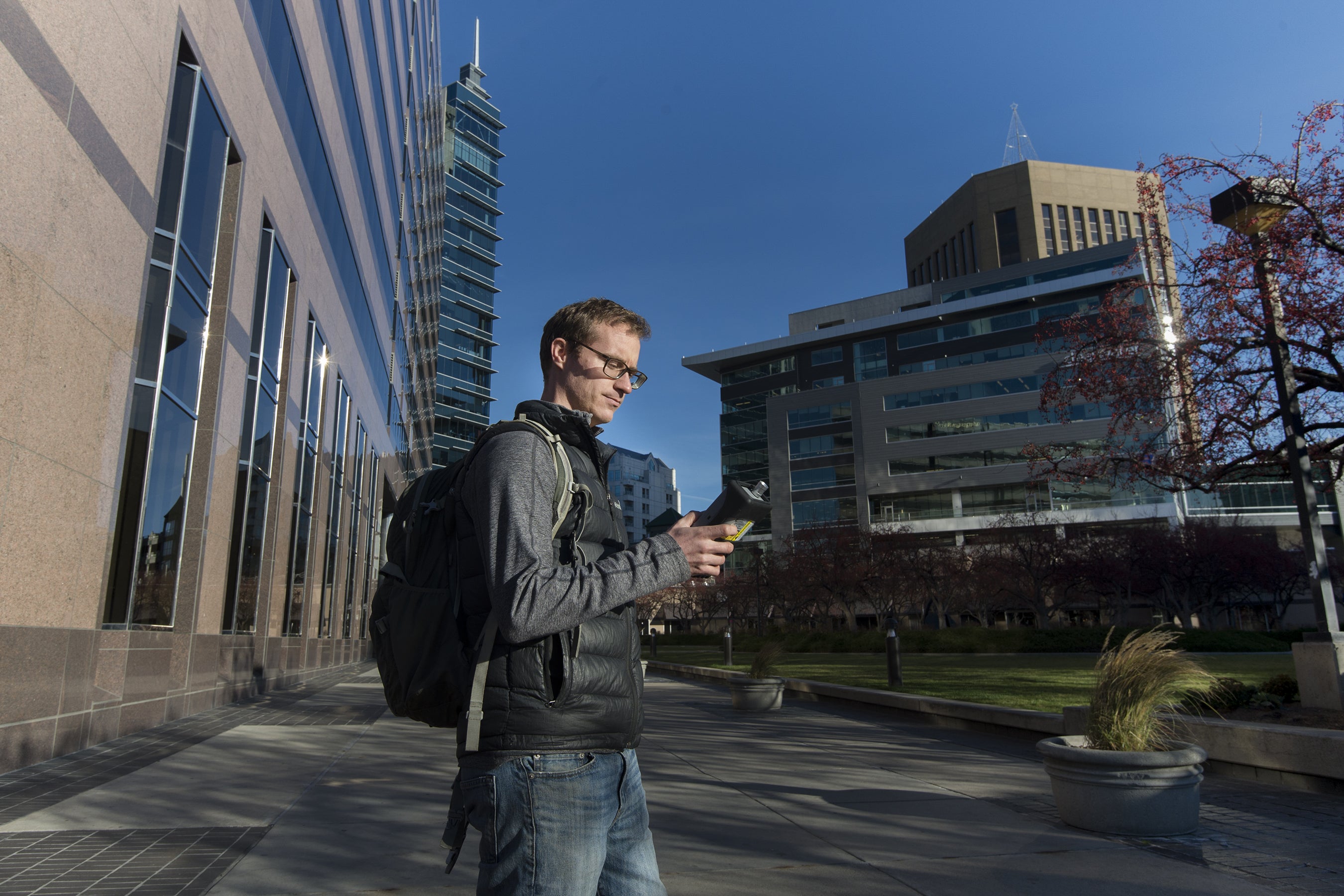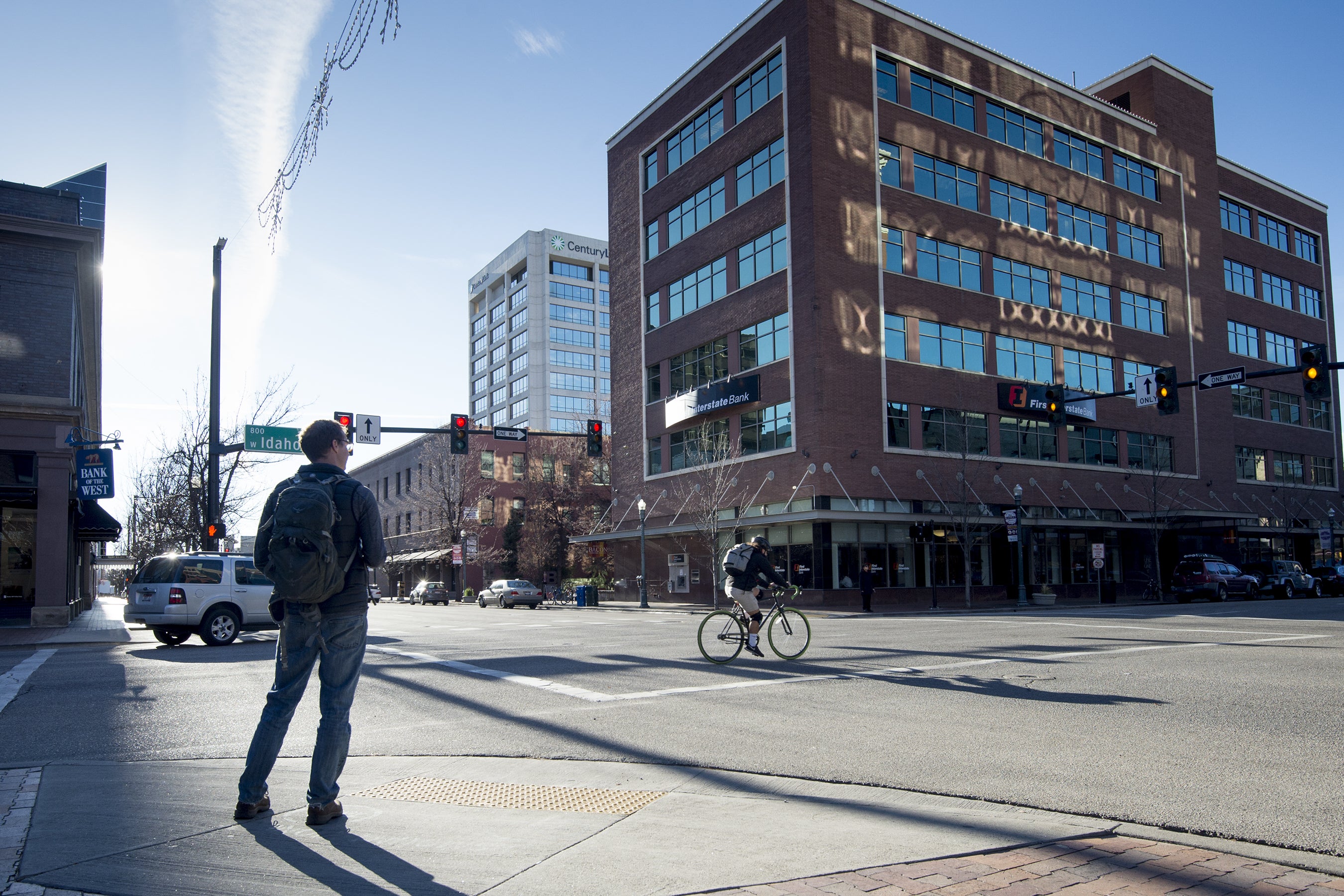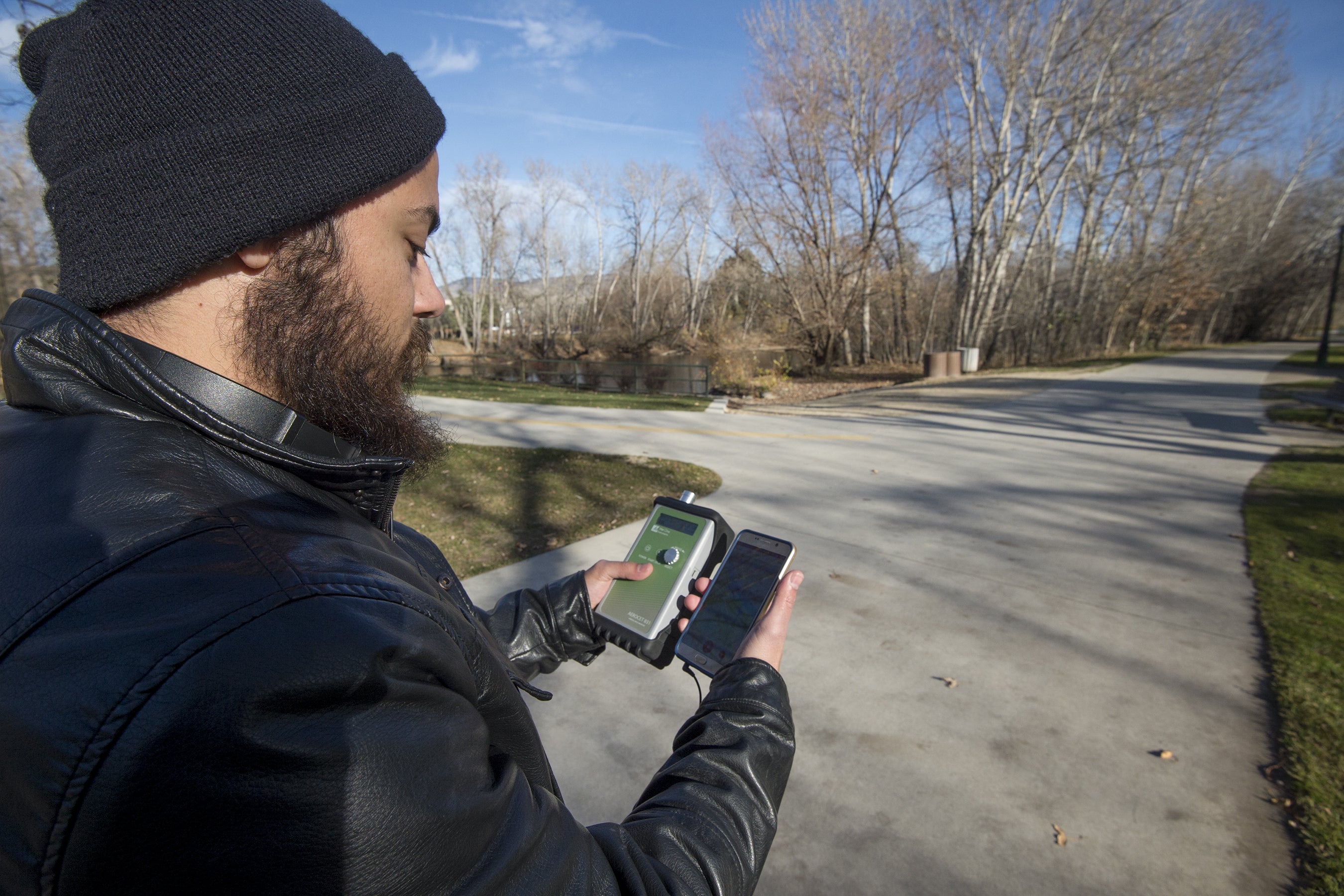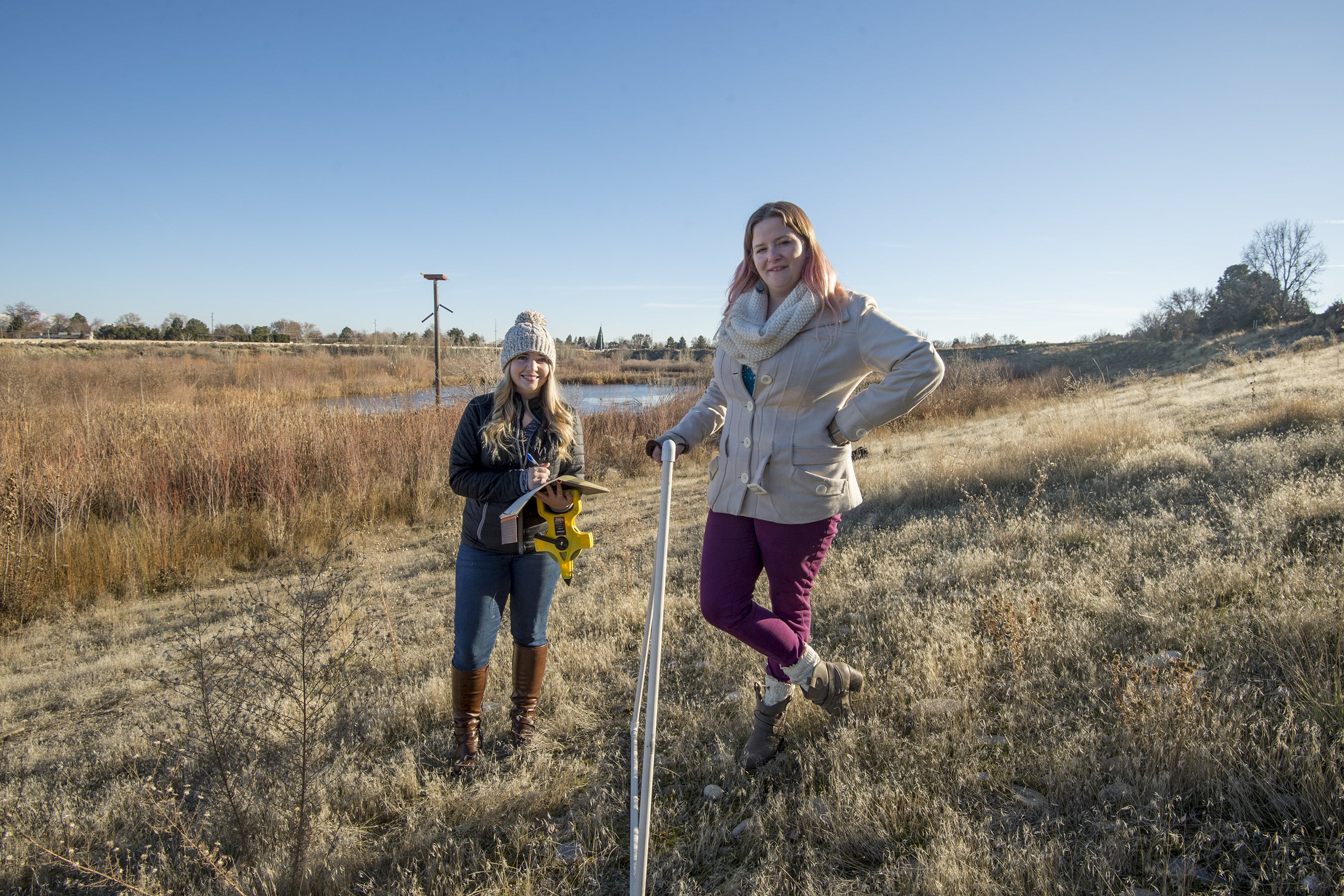Environmental studies course puts students to work studying air and water quality

Zac Traylor and his fellow School of Public Service students have walked hundreds of miles in downtown Boise. On crisp fall and early winter days, he walks along tree-lined streets, past storefronts and down alleyways, where trucks make deliveries to businesses. He’s carrying a backpack equipped with a portable air monitoring gauge, sensitive enough to measure differences in air quality at the street level. His weekly six-mile trek covers a lot of ground and he’s hoping it leads to a greater understanding of what’s going up into the air.

“The intent of our research is to make a grid of the Boise area showing the contrast in air quality, even over small distances. This could be used by the city for the creation of new roads, or by sensitive populations to avoid tracks with high particulate matter counts.” – Zac Traylor
Traylor is one of 35 environmental studies students who are out in the field partnering with the community and working on year-long research projects as part of their Finishing Foundations capstone.
While the Treasure Valley has a few fixed, large-scale air quality monitors, most measure larger particulate matter, classified as PM 10. Traylor and his team work with the Idaho Department of Environmental Quality to look for PM 2.5, a much smaller particulate matter, and one that is known to negatively impact human health.
Professor Beau Hansen, who coordinates the projects, also is proof that such undergraduate projects can positively impact the student experience.
He did his undergraduate work at Boise State in anthropology and biochemistry and had rich hands-on research experiences that made him a competitive candidate for graduate school programs.
“Experiences like these are part of what makes Boise State so great for undergraduates. I always appreciated the research opportunities that I had as an undergraduate here, and am happy to see that these opportunities have only expanded over time,” he said.
After graduate school, he taught classes, worked as a biotechnology consultant, and owned and operated an analytical laboratory before returning to Boise State to teach and eventually head up the environmental studies program in the School of Public Service. Hansen’s research interests have taken on different manifestations over the years, but are currently focused around energy policy and agriculture sustainability. His diverse background has led to an array of projects for his students.
“Environmental studies is super interdisciplinary in nature. It incorporates science and humanities, as well as policy,” he said. “The year-long projects are intended to provide students real-world experience and networking opportunities. Similar to an internship, they get to do some real work of interest to them and show what they can bring to the table.”

Javier Luna works on the air quality project with Traylor.
The students spend about 90 minutes each week in downtown Boise gathering data from the monitor, then inputting the data into Google Earth to generate a map of average PM concentrations at the neighborhood level.
“I like the fact that this project has forced me to get out of my comfort zone and put together a research project on my own, with some guidance from Professor Hansen,” Luna said. “I only have two semesters to work on it, so I don’t expect to see the same results as someone who has devoted years of their life to research, but nonetheless I am gaining new knowledge and helping contribute to our understanding of air quality patterns around Boise.”
When the students wrap up their projects in the spring, they will produce posters for the Boise State undergraduate research conference, and gain experience and confidence in presenting their findings.
Each of the nearly 300 environmental studies majors will have an experience like this by the time they graduate.
Some will find themselves applying at companies like Idaho Power or Exxon Mobile, while others will seek a role in corporate sustainability with companies like Apple and Nike. Many others hope to work with nonprofits, or city, state or federal agencies that are tasked primarily with environmental promotion and protection. Those agencies often have limited resources.
“Without these students, we wouldn’t be able to put together nearly as comprehensive a data set,” said Ben Jarvis, pollution prevention projects coordinator for Idaho DEQ and a master’s candidate in Boise State’s public policy and administration program. “We are integrating them into the entire process of compiling and analyzing the data and drawing conclusions from it to develop a graphic representation of what those differences are, so that we eventually can reduce sources of pollution in the areas that are effected.”
Jarvis also is working with students to develop and test effective, but more environmentally friendly, solvents that can be used in auto body shops to remove old paint. Other students in Hansen’s class are striving to build a climate monitor using a Raspberry Pi, developing project proposals for the Boise Open Space and Clean Water Improvement plan, researching options for recycling used electronics in Kenya, or assisting in the writing of this year’s College of Business and Economics sustainability report.

A number of other students are participating in projects with Land Trust Treasure Valley related to rejuvenating and restoring the Hyatt Wetlands in northwest Boise.
Senior Hannah Wynn and her team are documenting how herbicides affect invasive grass species in the area.
“We would like to see the 12-acre hillside dominated by native bunch grasses, rabbitbrush and sage,” she said. “This experience has been so great. I am loving being able to get out into the field and learn about what a healthy desert ecosystem looks like.”
Seeing what real data looks like and learning to apply research methods to that data is key to the students’ development, Hansen noted.
“Our students are coming to these projects individually, with each of them coming up with a project proposal and taking leadership in some aspect. But they’re also learning to come together, to combine forces and to collectively solve problems. Those are valuable skills.”
